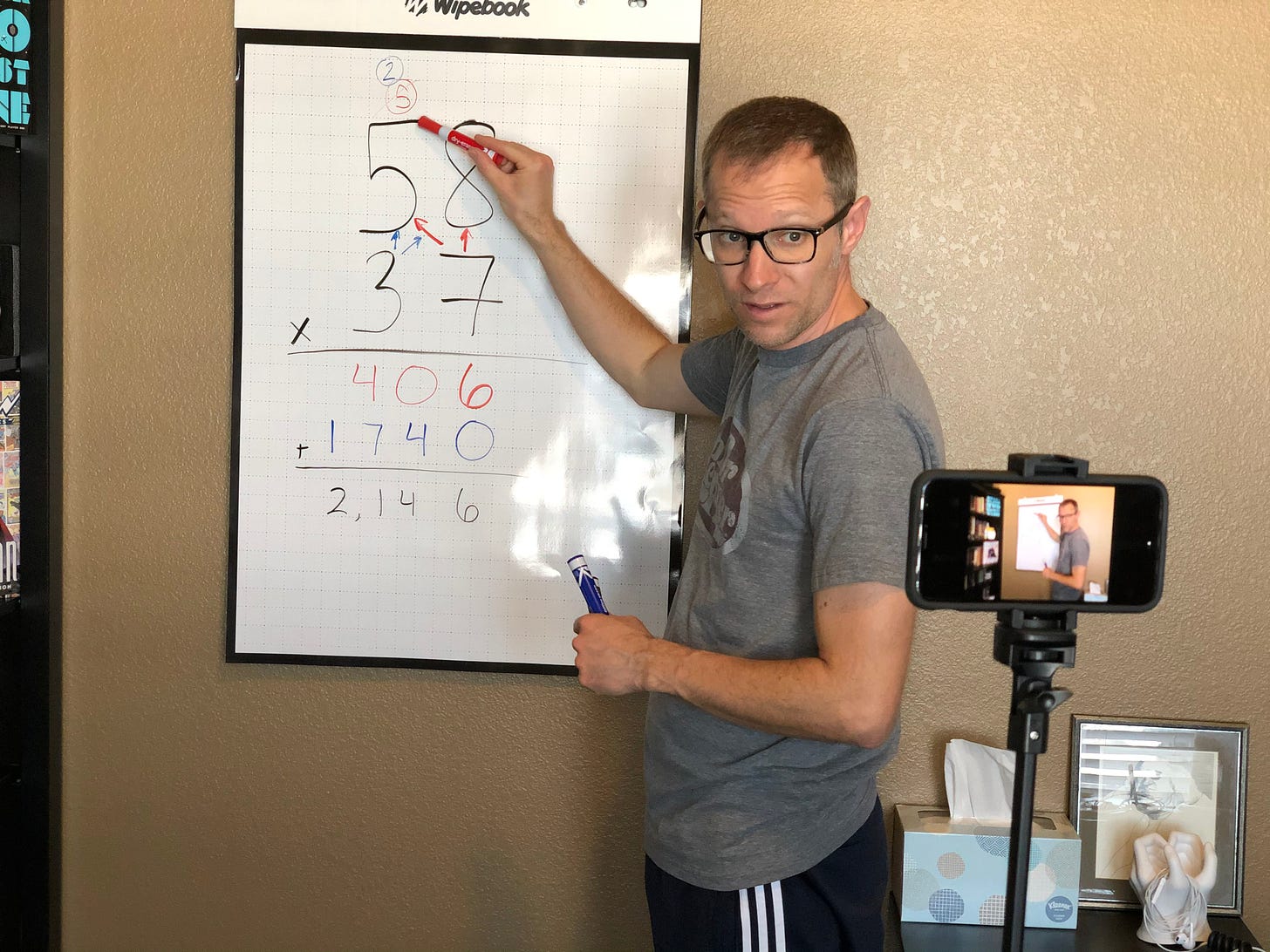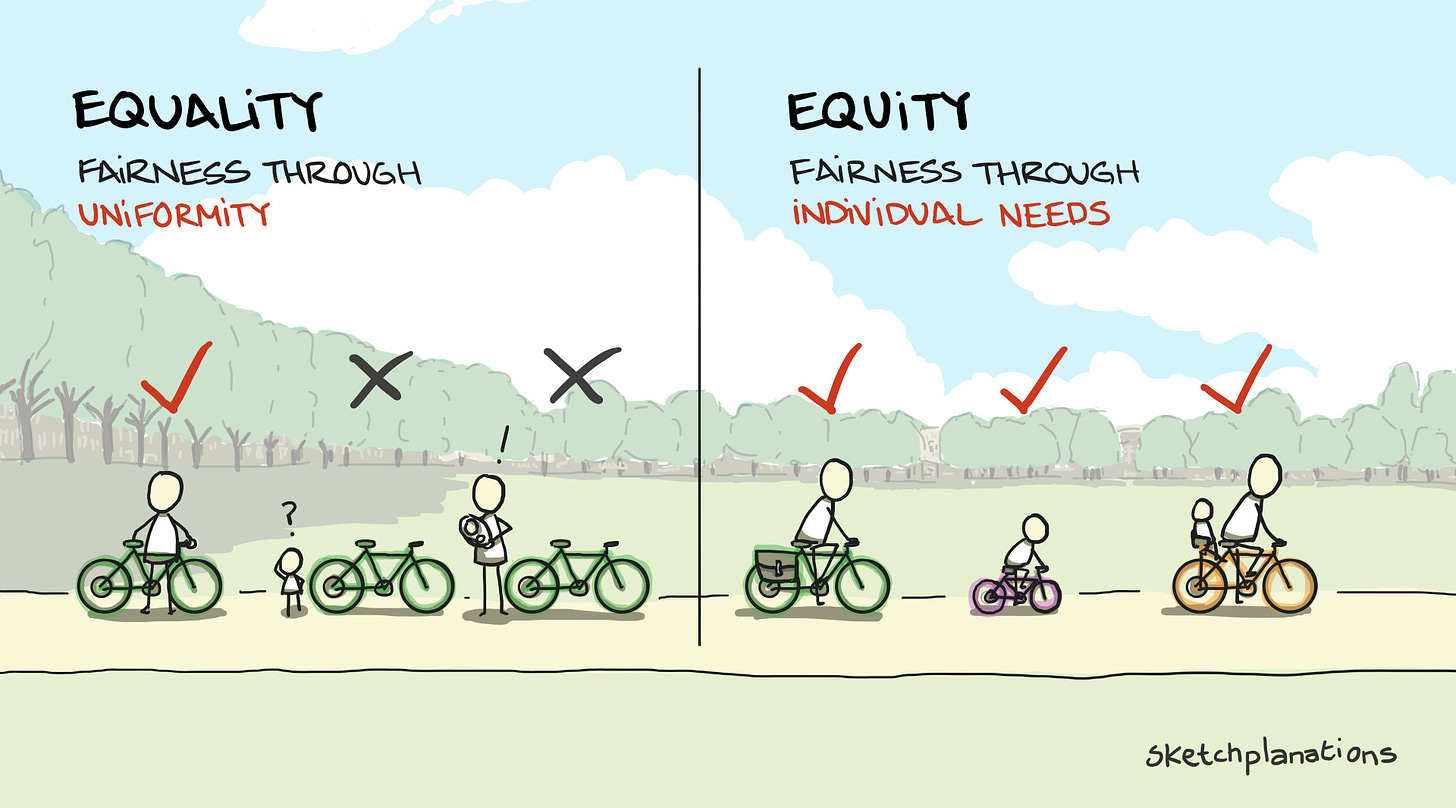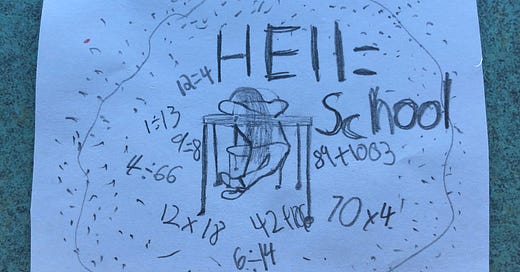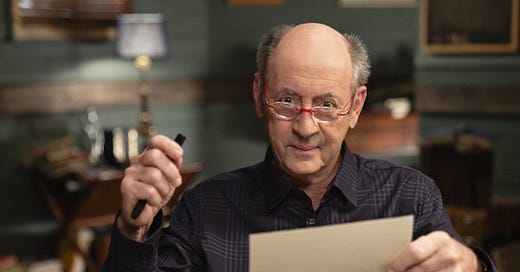

Discover more from Adrian’s Newsletter
Like most of us here on Substack, I watched the
interview with Rick Beato. Gioa was the very first person I subscribed to when I joined the Substack community. I’ve admired his music writing since 2019 when I had an idea for a listening learning experience for my students. I read Music: A Subversive History looking for resources on how to teach my students to see musical expression as an active process. I wanted my students to start paying attention to their music, to know what inspired the music they like, and where it came from. I gained so much from Gioia’s book, taking what I learned to design Now Spinning, an after-school club that helps students take a close look at the socio-cultural factors that influence popular music of all genres. Gioia’s writing is sharp, observant, and often hilarious. I respect his expertise and opinions.So, when Gioia decides to do his first interview in more than a year, I immediately clicked play. Beato and Gioia have a wide-ranging conversation. If you haven’t seen it, I encourage you to watch the entire interview (94 minutes). I listened to it across a couple of days, giving me time to think about and process all that Gioia has to say.
I love when I am reading (or listening to) something not related to education or teaching, and encounter an idea that makes me think deeply about my pedagogy. At 54:30, Gioia discusses how important art is to society. He contrasts art and entertainment saying,
“entertainment gives you exactly what you want. That’s the Entertainer’s job. But, the Artist doesn’t operate like that. The artist makes demands on you. That’s the essence of the artistic experience.”
This is how I feel as a teacher. There is an art to teaching. My job is not to entertain my students. I’m not a babysitter. Masterful teachers make learning feel engaging and alive because they are filled with intentional love and authenticity.
Dr. Adeyemi Stembridge explains that masterful teachers “choreograph rigorous and engaging learning experiences that draw richly on students’ strengths and identities by building upon their assets.”1 My job is to make demands of my students and take them places in their learning they never would have gone without my encouragement. Learning is an active process; students who take the guided tour approach, do not leave with as rich of an experience. They don’t learn as much or as deeply. To be fair, K-12 public schools train students to be passive recipients of their education. Teachers promote compliant behavior where students sit quietly, listen, complete the designated activity, and finally take the provided assessment. Students who willingly follow this process are rewarded and receive the highest grades. Students who question authority or what they are learning, are usually punished. When a student struggles to understand a concept, it is rarely the teacher who is charged with teaching it differently. In fact, many times the student is blamed for their lack of understanding. Instead of giving students the agency to reflect on their understanding, many teachers choose how their students will learn.
I taught that concept last week. He should know it. He must not have been paying attention.
True, sometimes students don’t always pay attention. I’ve experienced that a lot this year! However, it’s wrong to assume that the best way to get students’ attention is to be more entertaining. Making a lesson more engaging is not about adding songs or more fun things for students to do. In the design world, this is called feature creep, where engineers and designers continue adding unnecessary functions that can add “expense and complexity to otherwise straightforward products.”2 Have you ever looked at the back of your shampoo bottle and wondered why there are 42 different ingredients? How many of these essential oils are really necessary to clean your hair? I’ve seen a lot of teachers add too many unnecessary elements to their classrooms trying to be more engaging. Passion Projects, for example, might seem fun and creative, but often have little substance, consisting of more coloring than thinking.
This is one of the main reasons I like to say that I design learning experiences, not teach lesson plans. This does not mean that I don’t do direct instruction. I see my job much the same way Gioia describes the artist’s job. I build trusting relationships with my students so that I can make cognitive demands to engage them in their own learning and expand their minds. I want them to remember the connections they made to the novel they were reading in their Socratic Readers Guilds. I want them to see writing as an experience, not just an assignment. I design learning experiences to break the banality of the standard educational experience.
If I gave in to all of my students’ demands, then my job would be to provide endless bags of Takis® while students played on their phones. I’m not a TikTok star. My job is to teach students, not to influence them to buy a certain brand of energy drink. My name is Mr. Neibauer, not Mr. Beast.
Active versus Passive Culture
Ted Gioia also has a lot to say about AI and how algorithms affect our culture. If you listen to the entire interview, he discusses George Soros’ Theory of Reflexivity, which helped him become a billionaire recognizing and investing in trends. Gioia describes how the Theory of Reflexivity states that trends “will always go on longer than is sensible, and eventually will have to reverse. But, it has to get to a ridiculous extreme before it reverses.” Reflexivity occurs everywhere in our culture, from Starbucks’ ridiculous new lemonade drinks, to Spotify’s AI-created music and playlists..
What I find most interesting is how Gioia relates this to active versus passive culture. In an active culture, people have agency; they make their own choices. In a passive culture, the choice is made for you. A teacher using the same lesson from ten years ago is doing so because it “worked.” She is looking backward to previous lessons and students in order to predetermine what and how her students will learn today. Just as Spotify’s algorithms are backward-looking mechanisms, telling what you should listen to now based on what you listened to last week, so to is this type of lesson planning. Just because a lesson worked before with a certain group of students, doesn’t mean it will work with your students today.
By contrast, learning experiences are not formulaic. I design experiences to meet the needs of my current students. I require my students to take an active role in their learning. When students engage in an active learning experience, they have the ability to make meaning from what they are learning, and to do so in a way that makes the most sense to them. I’m not replaying a lesson plan because test scores told me that it worked last year. I’m not an algorithm. I’m a teacher. I look forward, straight into my students’ eyes. I look at the human beings sitting in front of me and ask myself, what do they need from me today? What do they need right now from this learning experience?
One of the biggest struggles I had this year was how much my students fought every aspect of learning in my classroom. Any time I challenged them to think, engage, or demonstrate their knowledge, they refused. At times, I felt like I was dragging them through fifth-grade. No amount of cajoling or entertaining worked to motivate my students to participate in class. So, instead of trying to dress up a math lesson to be more entertaining, I consistently and considerately pushed my students to think. I did not prepare Pinterest lessons. I focused on a few big ideas in each content area, and reviewed those throughout the week. I was hard on my students and never let up because I knew that they could do better. I sacrificed instructional time for character building. I released my expectations about certain activities and focused on the present social-emotional needs of my students. I remained firm in my accountability, while simultaneously designing a space where their academic identities were connected to their social and cultural identities. I taught my students that there is no standardized path to personal or academic excellence; they must walk their path themselves. No one is going to learn for them. They need to do the work.
Some argue that pre-pandemic, students eagerly awaited lessons their teachers planned; appreciating the effort to engage them in school. Whether this has ever been true, I’m confident that it is no longer applicable today. Teachers feel exasperated when trying to provide live “edutainment” in a desperate attempt to compete for their students’ engagement. Students are more motivated by Instagram influencers and TikTok stars than their teachers. That’s because these online personas are giving students more of what they want; it’s an endless hedonic treadmill.
I’m a teacher. It’s not what I am; it’s who I am. I provide my students with what they need to be successful in school and in life. They will complain and push back, but I will continue to be incessantly caring, supportive, and attentive to their needs. I will continue to challenge them because that is what they need. How I challenge them will forever change as each year I receive a new group of students. True equitable teaching requires that I recognize each of my student’s individual needs, and them empower them to own their learning. I do this through effective pedagogies of learning.
I have no intention to ever become a dull teacher who doesn’t care whether my students are enjoying themselves. School shouldn’t suck, but it shouldn’t be like Cirque du Soleil either. Just because I can’t play the guitar or rap mathematic and scientific concepts like Dr. Chris Emdin, doesn’t mean I will stop trying to connect with my students. I’m not trying to entertain them like a circus clown. I’m form lasting connections in service to helping my students grow into the incredible humans I know they are capable of becoming. My classroom can be an exciting environment, but not because I’m entertaining my students. Teaching is a dynamic profession. It requires both art and skill. I may have a bit of clown inside of me that works to make my classroom a fun place to learn, but that doesn’t mean I forsake my students’ learning for singing and dancing. I engage for learning instead of entertain for laughs.
I may not be the best teacher, and my classroom is definitely not perfect, but I work to create a space where students can be authentic and vulnerable so that they can grow.
Have a great week!
—Adrian
Resources:
Dr. Sembridge is an incredible educator. He is an expert in Culturally Responsive Education (CRE). His book discusses the six themes of CRE and gives teachers authentic planning questions to plan and teach with an equity mindset.
Design principle: KISS the Feature creep
This short article is a good summary of feature creep and how to avoid it. I particularly like the key takeaways.
Change by Design | Tim Brown, CEO of IDEO
Tim Brown’s work at IDEO has influenced my pedagogy a lot. This is an excellent book to help get you started in understanding human-centered design thinking.
Do Teachers Have to Be Entertainers? Here’s What They Say
This article had me questioning my own thoughts as I wrote this post. I do believe that there is a fine line between engaging and entertaining.
What do you think about this question? Leave a comment below.
If you want another great Beato-Gioia interview, this is their first one.
Subscribe to Adrian’s Newsletter
Sharing my favorite resources for creating memorable learning experiences, epic classroom fails, and hopefully some success stories, too!



















Thank you for this! I'm a high school student, and this really showed me a new perspective. I also must say that who I am today has been greatly influenced by those very teachers who kept challenging me and, as you put it, gave me what I needed instead of what I wanted. Even though sometimes school can be not so "fun", eventually all our learning experiences pay off.
I haven't seen that interview (yet), but I agree that teaching should be about challenging rather than entertaining. It's patronising to think students just want to be entertained. Besides, a really good challenge is in itself entertaining (cf Cryptic crosswords, strategy games, difficult problem to solve etc